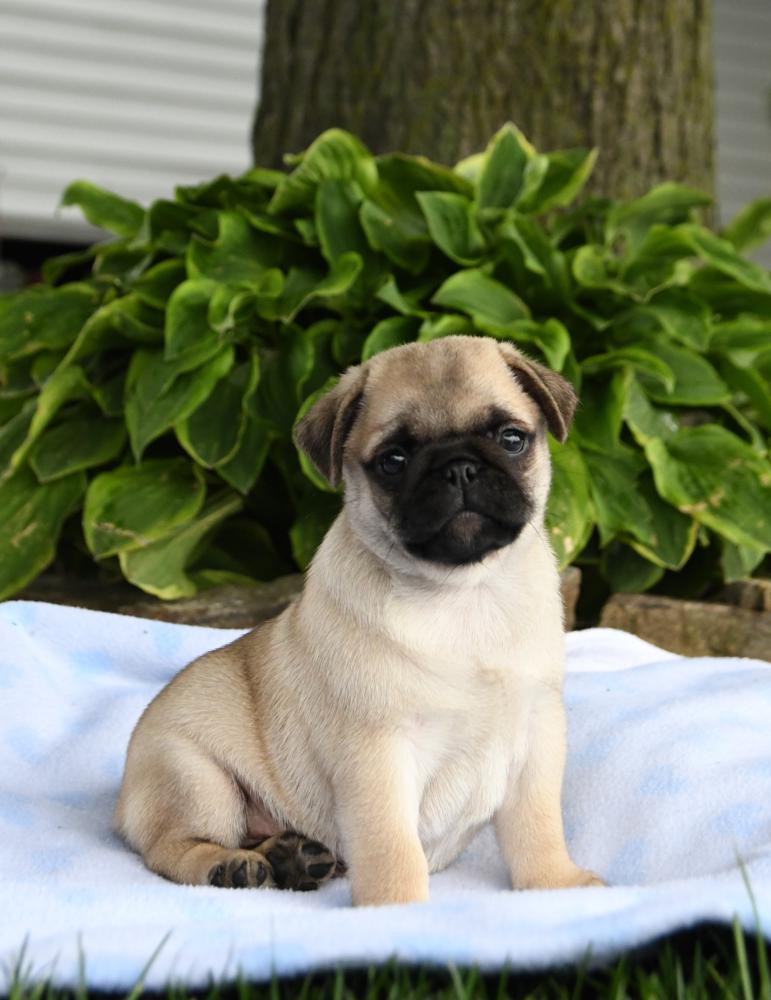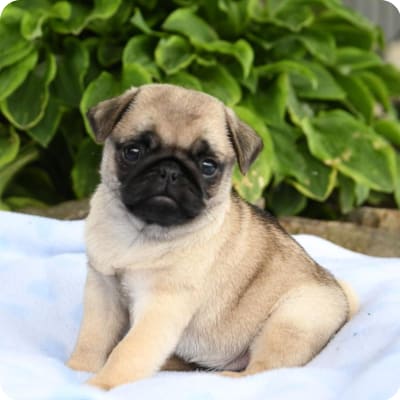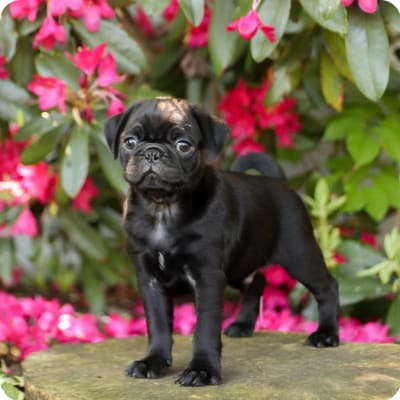Pug Puppies

A fun-loving, cuddly, and outgoing breed
Low-energy and preferring to cuddle up on the laps of their owners, Pugs make great family pets for low-key households and apartment dwellers. These playful, silly dogs love being clowns for their families and making others laugh. Believed to be one of the oldest dog breeds that's still in existence, the Pug continues to grow in adoration and popularity among families today.
Pug At a Glance




Pug At a Glance
- Size: 10"-12", 14-18 lbs.
- Lifespan: 12-15 years
- Energy Level: low
- Coat: Short and smooth
- Shedding: moderate
- Hypoallergenic: No
- Dog Group: Toy
- Common Nicknames:
Pug Breed Guide
Learn More About Pugs


